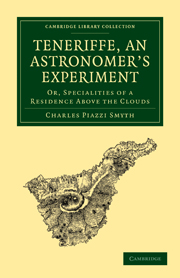CHAP. II - DRACŒNA DRACO
Published online by Cambridge University Press: 05 July 2011
Summary
That Nature cannot be improved on, is a doctrine with some, both in art and science. There are painters who advocate simple copying to form a picture; under the sweeping and levelling conclusion, that everything that is natural, is beautiful; and there are physicians who oppose the idea of sending consumptive patients to a warm climate,—the absurdity, say they, of supposing that nature would have produced beings in any region of the earth, not adapted to that part, far better than to any other.
Yet in spite of such opinions, men who have been threatened with failing lungs in this country, expatriate themselves and become sturdy sheep-farmers in Australia; and there are, happily for art, many painters, who will not condescend to sit down before the first barn or tree they chance to come across, but wander over the whole country, noting thousands of trees and dwellings of men; comparing, selecting, combining, and reasoning on the differences found.
To the same effect has been the introduction of cochineal and its cactus into Teneriffe. Nature had previously set a plant in the island, Dracœna Draco, or the dragon-tree, producing a splendid scarlet in the form of gum, dignified by the old Arabian physicians with the mystic name of “dragon's blood.” What need then, according to certain dogmatists, for introducing an insect and a plant from the other side of the world?
- Type
- Chapter
- Information
- Teneriffe, an Astronomer's ExperimentOr, Specialities of a Residence Above the Clouds, pp. 410 - 427Publisher: Cambridge University PressPrint publication year: 2010First published in: 1858

